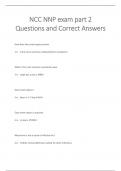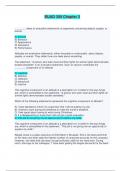College aantekeningen
Lecture notes 1 to 11 Managing negotiations
- Instelling
- Vrije Universiteit Amsterdam (VU)
- Boek
- Getting To Yes
Aantekeningen van alle lectures, behalve responsie college (lecture 12). Het is een combinatie van de lecture slides en mijn eigen aantekeningen gemaakt tijdens de lectures. Zie mijn overige advertenties voor een samenvatting van alle artikelen.
[Meer zien]













